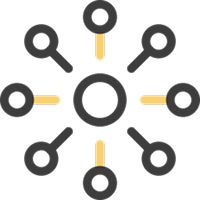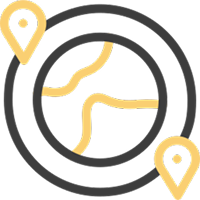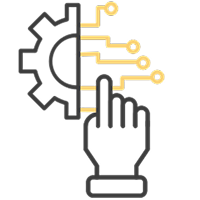Scaling Vocational Education: Lend a Hand's Digital Transformation
Summary
Impact Created
25+
State Reach
99% +
Faster Deployments
Days-to-Minutes
Analytics
About the organisation
A not-for-profit organization headquartered in Pune, India works at the intersection of education and livelihood to provide youth employment and entrepreneurial opportunities. Lend A Hand India focuses on integrating vocational education with mainstream education at secondary and higher secondary education levels (Grades 9-12 and students aged 14-18) to make secondary education more meaningful and interesting for their sustainable livelihoods.
Problem Statement
LAHI faced systemic challenges scaling vocational education across 25+ states due to fragmented manual monitoring, outdated technology, and lack of real-time data visibility.
Solution
LAHI modernized program delivery by deploying Lighthouse, a custom, multi-tenant software, enabling real-time monitoring, centralized data, and AI-powered analytics, drastically improving efficiency and scalability.
Key learnings
- Custom solutions enable scalable, flexible control.
- Centralized data integration enhances consistency and analysis speed.
- Digital transformation requires holistic approach: tech, process, people.
Key Technologies Used
- Lighthouse (custom software, multi-tenant)
- AWS RDS
- Power BI
- AI-based NL2SQL chatbot
Quick Facts

Organisation Name
Lend a Hand India

Organisation Website
Visit Site

Founding Year
2006

Number of Beneficiaries served
Schools : 8000+, Trainers: 11,000+, Students: 6 lakhs+

Geography Served
All-India

Focus Area
Programmatic Impact

Functions Impacted
Program Delivery / Beneficiary Services

SDG Addressed
Full Case Study
Challenges
Hurdles in scaling and ensuring quality across its vocational education programs due to fragmented monitoring, outdated technology, and limited real-time data access.
The complexities of delivering and monitoring vocational education across 25+ states and Union Territories posed a systemic challenge for the organization. Growing demands highlighted critical inefficiencies, hindering its ability to ensure program quality and demonstrate impact.
- Unscalable Program Monitoring: Difficulty in real-time tracking of trainer presence, class regularity, lab functionality, and equipment availability. Early manual data collection was inefficient and couldn't scale.
- Technology & Infrastructure Limitations: Reliance on rigid commercial off-the-shelf software and separate custom software (Lighthouse) instances per state led to:
- Limited customization and increasing costs.
- Redundant deployments and slow onboarding (1 week/instance).
- High maintenance overhead.
- Fragmented Data & Integration Issues: States not using Lighthouse relied on disparate tools like Google Sheets and Kobo Forms, resulting in inconsistent data and hampering cross-state analysis.
- Reporting & Analytics Bottlenecks: Power BI dashboards required complex SQL queries, creating dependence on technical staff (MEL team) and delaying insights, impacting timely programmatic actions.
- Overall Operational Constraints: These issues collectively affected the organization's ability to serve states efficiently, scale programs quickly, and credibly demonstrate measurable impact to stakeholders and government partners.


Solution
Transformation of vocational education delivery through a phased strategy, building custom scalable tools and empowering real-time, data-driven program management.
Its digital transformation journey was a strategic, multi-phase initiative focused on building a scalable and efficient operational backbone for its widespread vocational education programs.
- Starting Point: Began the digital journey in Odisha, prioritizing real-time data collection to ensure trainer presence and functional labs.
- Tool Evolution: Initial reliance on rigid, costly off-the-shelf tools quickly led to the strategic decision to develop custom software for greater flexibility and control.
- Custom Software: Developed "Lighthouse," a proprietary solution evolving through versions:
- Lighthouse 1.0 (2021): Initial launch in Gujarat.
- Lighthouse 2.0 (2022): Enhanced with mobile-friendly features.
- Lighthouse 2.5 (2023): Redesigned for increased flexibility and adaptability to domain changes.
- Lighthouse 3.0 (2024): Implemented multi-tenant architecture on AWS RDS, enabling a single deployment to support multiple states, drastically reducing setup and maintenance.
- Analytics & AI: Leveraged Power BI for comprehensive dashboards and built an AI-based NL2SQL chatbot to provide instant, natural language analytics, democratizing data access.
- Collaborative Approach: Internal teams defined needs, engaging external vendors for development, while gradually strengthening in-house capacity for analytics and support.
- User-Centric Rollout: Implemented a phased rollout across states (Gujarat, Odisha, Telangana) with a mobile-first design, ensuring data capture at the source.
- Centralized Data: Established a centralized data warehouse to integrate fragmented data from various sources, improving consistency and analysis speed.
- Key Milestones: Its transformation was marked by the critical shift from off-the-shelf solutions to the scalable, multi-tenant Lighthouse system (2021-2024), empowering non-technical users to access data independently.
- Continuous Improvement: The approach continuously evolved, balancing internal planning, external support, and technology to meet growing operational and program needs.
Outcomes & Impact
Enhanced program quality and operational efficiency, accelerating nationwide scalability and fortifying its position as a tech-forward leader in vocational education.
The digital transformation profoundly improved its operational capabilities and amplified its mission impact, delivering tangible benefits across its ecosystem.
1. Enhanced Program Quality & Reach:
-
Real-time Monitoring
Improved program quality and sustainability through real-time visibility into trainer presence, class regularity, and lab functionality. -
Accelerated Scale
The multi-tenant Lighthouse platform drastically reduced server setup time from weeks to near-instant (99%+ faster deployments), enabling rapid program expansion across 25+ states and Union Territories.
2. Data-Driven Decision-Making & Efficiency:
Empowered Analytics
Dashboards now generate insights in minutes instead of days, and the AI-based NL2SQL chatbot provides instant analytics, democratizing data access for non-technical users.Operational Streamlining
Centralized data warehouse improved data quality and analysis speed, leading to more efficient operations and quicker field response.-
Reduced Dependencies
The chatbot reduced reliance on the MEL team for basic reporting, freeing up technical resources for strategic analysis.
3. Strengthened Credibility & Strategic Positioning
Organizational Agility
Faster decisions and improved operational efficiency enhanced the ability to take timely programmatic actions.-
Perception Shift
The organization is now viewed as a technology enabler by partners, with other states (e.g., Andhra Pradesh, Delhi) drawing inspiration from Lighthouse to build their own systems. Measurable Impact
The transformation enabled demonstrable, measurable impact to stakeholders and government partners, strengthening trust and fostering deeper collaborations.
Written by
Jayesh Ingale, Lend a hand India
The information provided here is created as a community resource and is not intended as professional advice or a recommendation by ILSS or Koita Foundation. While we strive to ensure the accuracy of the content, we do not take responsibility for any errors or omissions. Users should use their own discretion before making any decisions based on this information. ILSS or Koita Foundation assume no liability for any actions taken based on the information provided.


